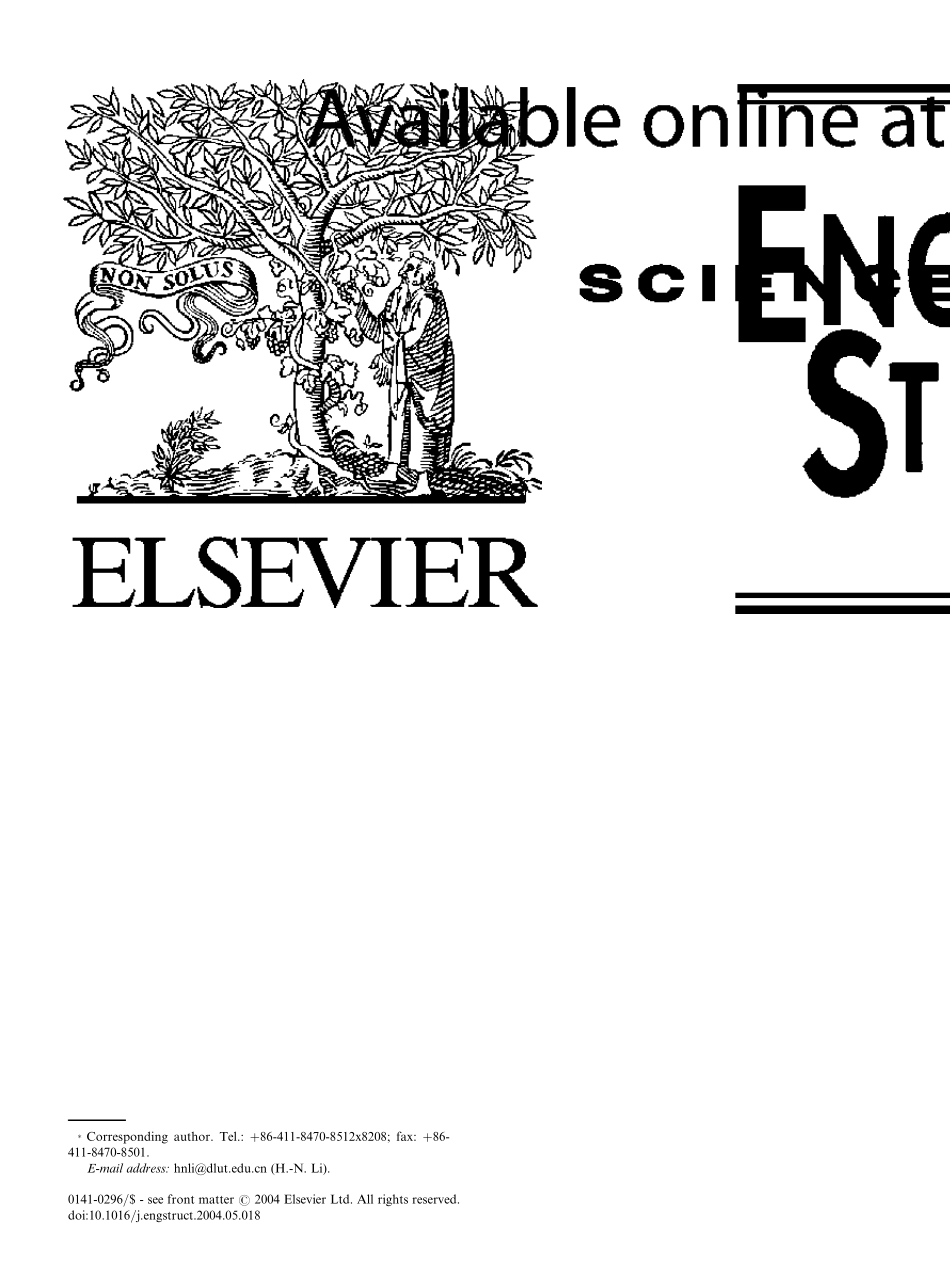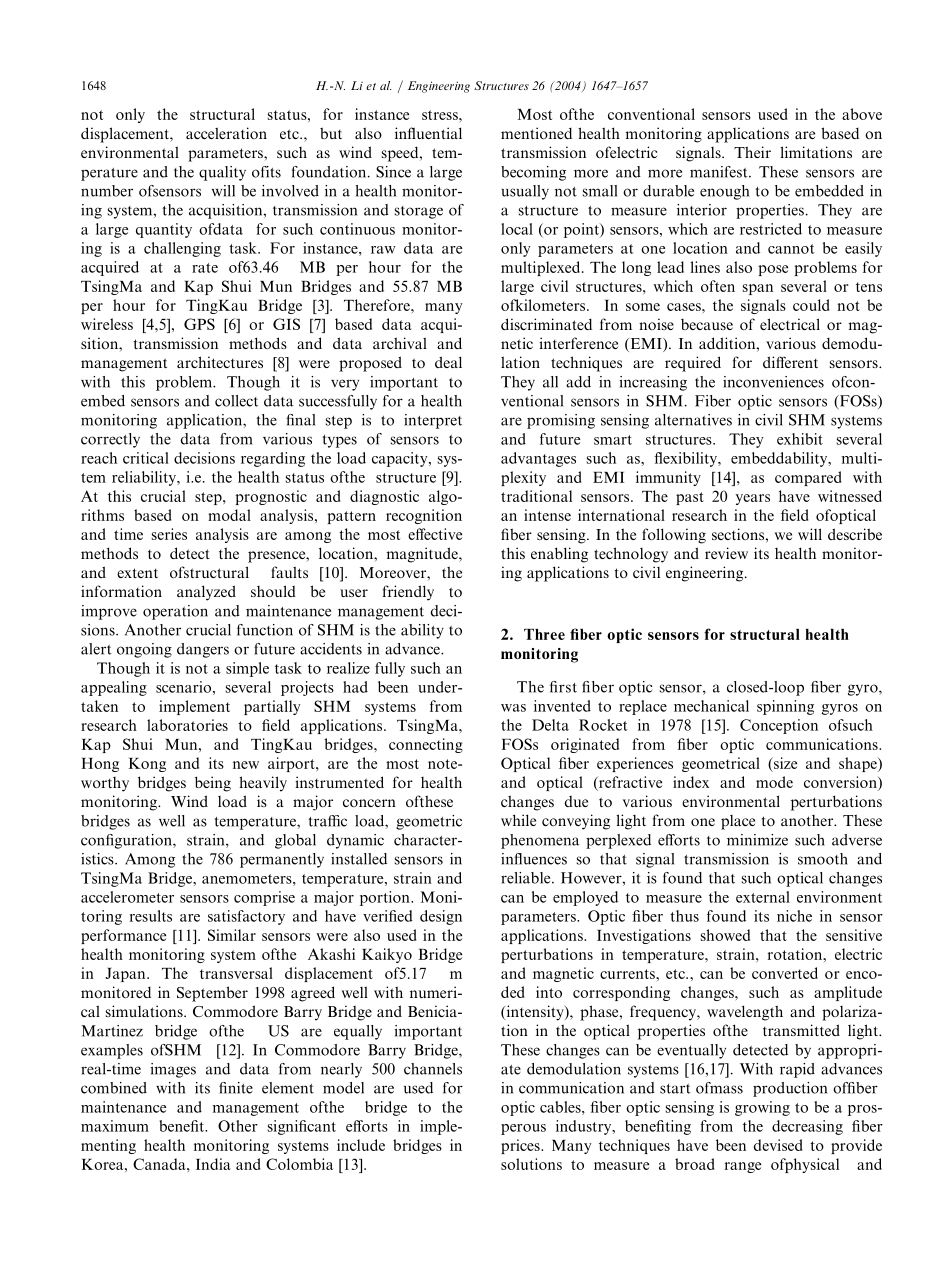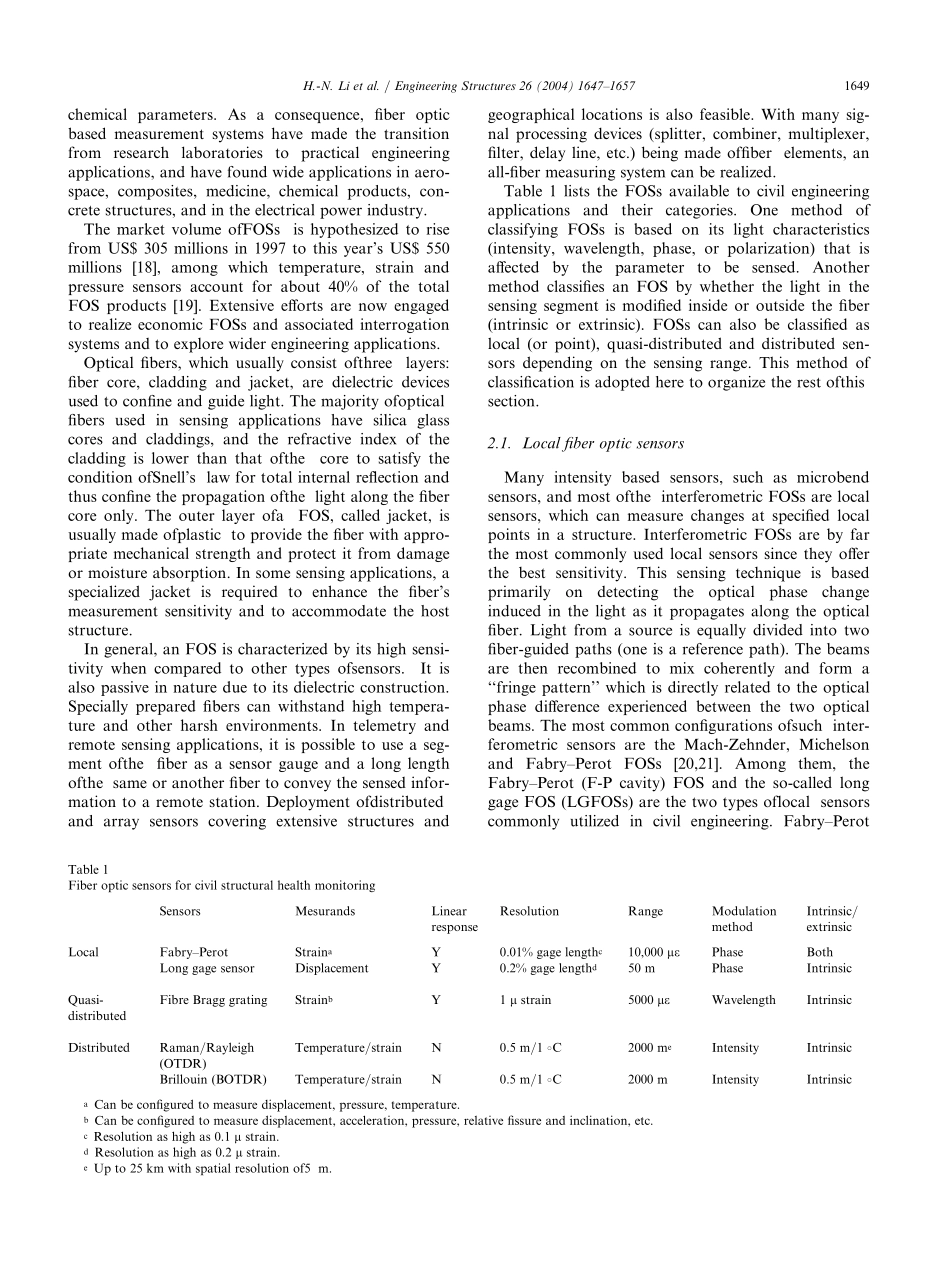à Corresponding author. Tel.: +86-411-8470-8512x8208; fax: +86-411-8470-8501.E-mail address: hnli@dlut.edu.cn (H.-N. Li).0141-0296/$ - see front matter # 2004 Elsevier Ltd. All rights reserved.doi:10.1016/j.engstruct.2004.05.018not only the structural status, for instance stress,displacement, acceleration etc., but also influentialenvironmental parameters, such as wind speed, tem-perature and the quality ofits foundation. Since a largenumber ofsensors will be involved in a health monitor-ing system, the acquisition, transmission and storage ofa large quantity ofdatafor such continuous monitor-ing is a challenging task. For instance, raw data areacquired at a rate of63.46MB per hour for theTsingMa and Kap Shui Mun Bridges and 55.87 MBper hour for TingKau Bridge [3]. Therefore, manywireless [4,5], GPS [6] or GIS [7] based data acqui-sition, transmission methods and data archival andmanagement architectures [8] were proposed to dealwith this problem. Though it is very important toembed sensors and collect data successfully for a healthmonitoring application, the final step is to interpretcorrectly the data from various types of sensors toreach critical decisions regarding the load capacity, sys-tem reliability, i.e. the health status ofthe structure [9].At this crucial step, prognostic and diagnostic algo-rithms based on modal analysis, pattern recognitionand time series analysis are among the most effectivemethods to detect the presence, location, magnitude,and extent ofstructuralfaults [10]. Moreover, theinformationanalyzedshouldbeuserfriendlytoimprove operation and maintenance management deci-sions. Another crucial function of SHM is the ability toalert ongoing dangers or future accidents in advance.Though it is not a simple task to reali...


